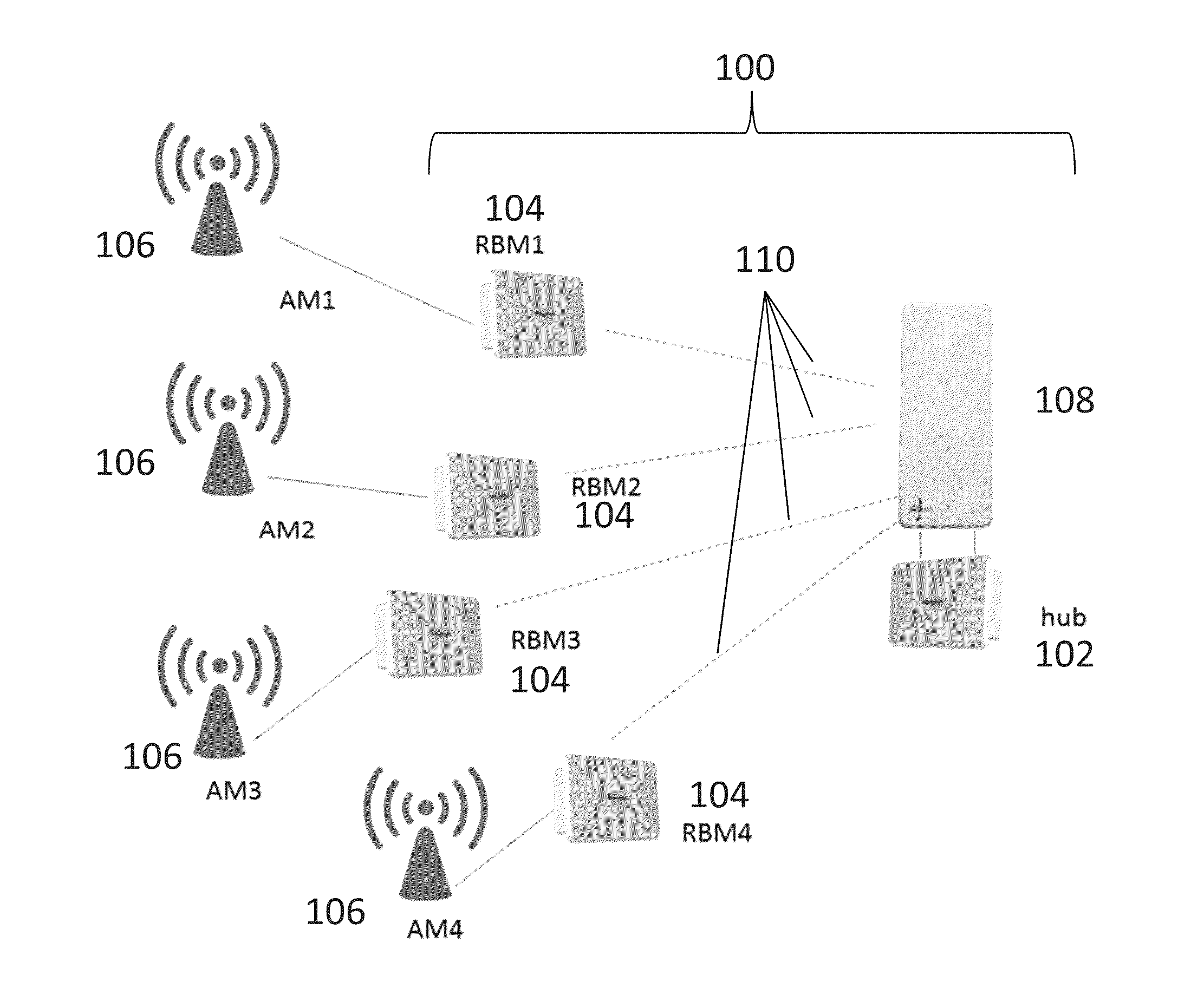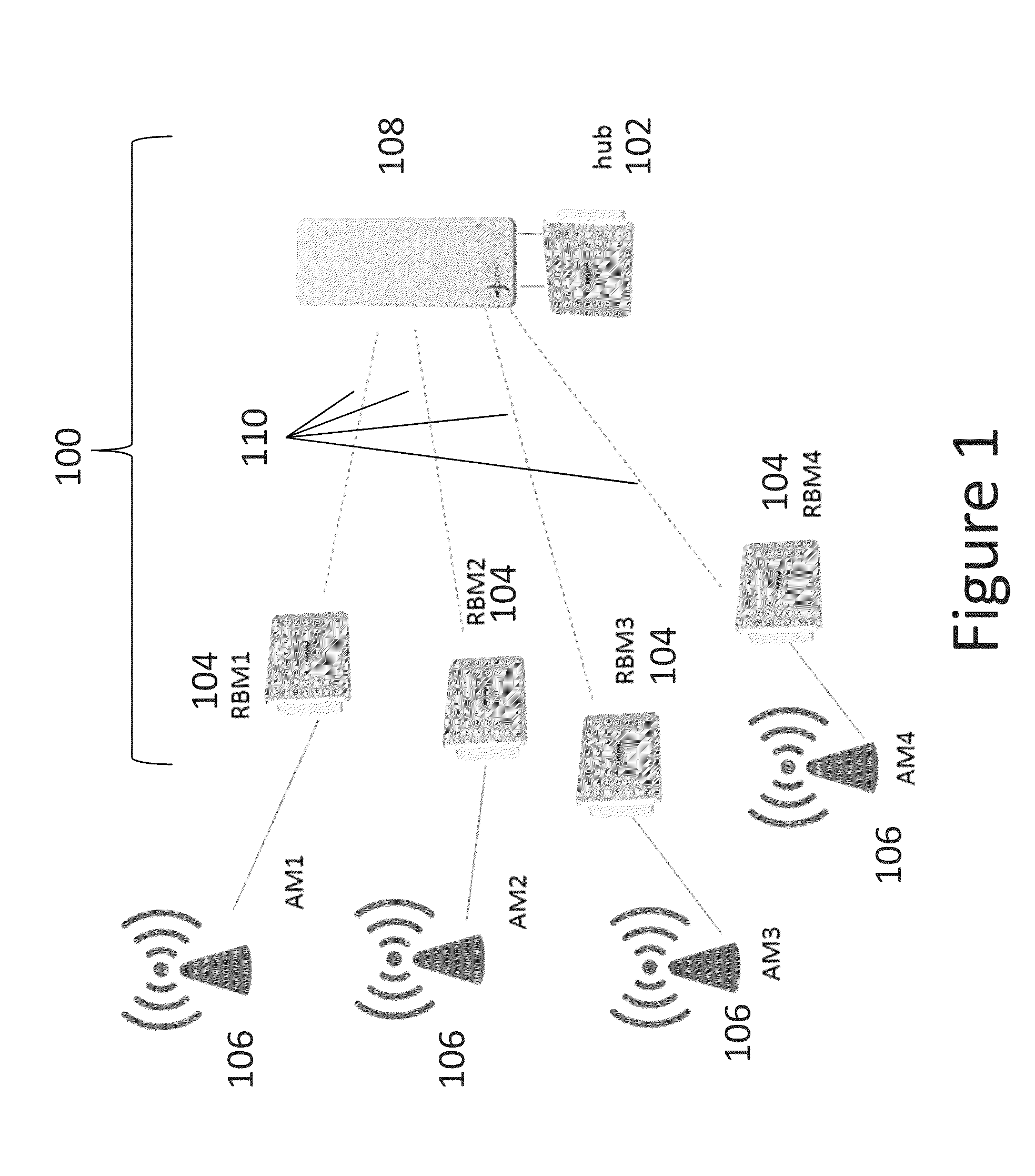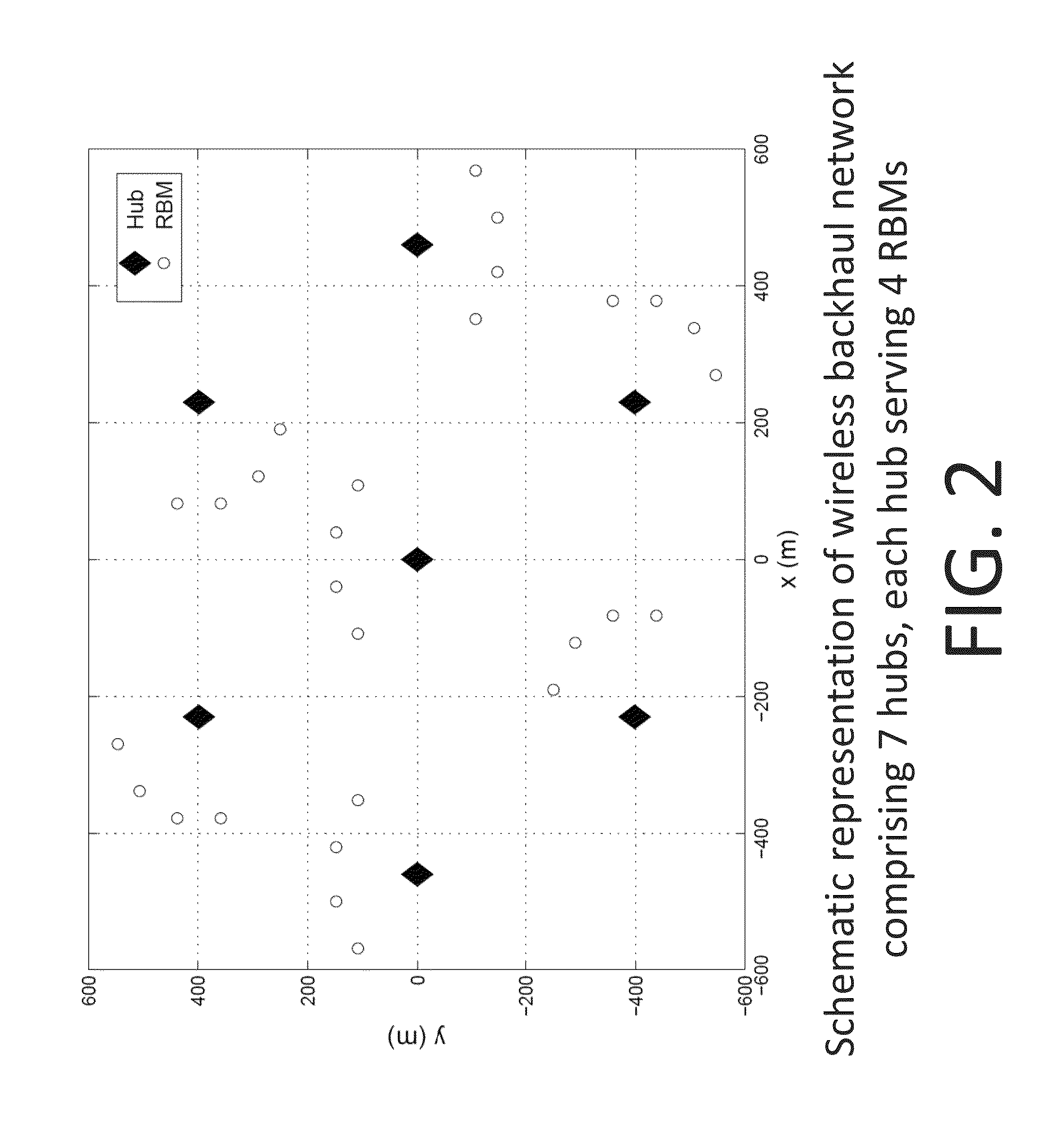Method and apparatus for managing interference in wireless backhaul networks through power control with a one-power-zone constraint
a wireless backhaul network and power control technology, applied in power management, electrical equipment, radio transmission, etc., can solve the problem of limited system performance and achieve the effect of reducing or eliminating the disadvantages of known systems
- Summary
- Abstract
- Description
- Claims
- Application Information
AI Technical Summary
Benefits of technology
Problems solved by technology
Method used
Image
Examples
Embodiment Construction
[0044]Wireless Backhaul Network Architecture
[0045]FIG. 1 shows a schematic diagram representing an example of a node or cluster in a point-to-multipoint wireless backhaul network 100 comprising one hub module 102, serving four RBMs 104, by radio links 110, i.e. in this example four hub-RBM links 110. Each RBM 104 communicates with and is co-located with an access module (AM) 106 of an access network, such as a small cell-base station, using a wired connection, e.g. an Ethernet cable. The hub module 102 has a separate directional antenna 108 and RBMs 104 each have an integrated directional antenna that is directed towards the hub. Unlike a multi-hop architecture, each link 110 comprises only one hop from each RBM 104 to a respective hub to carry the traffic. It is also different from the relay system where the access links and relay links share the same radio frequency band. The backhaul network operates at a different frequency band from that of the access network.
[0046]Thus, an exe...
PUM
 Login to View More
Login to View More Abstract
Description
Claims
Application Information
 Login to View More
Login to View More - R&D
- Intellectual Property
- Life Sciences
- Materials
- Tech Scout
- Unparalleled Data Quality
- Higher Quality Content
- 60% Fewer Hallucinations
Browse by: Latest US Patents, China's latest patents, Technical Efficacy Thesaurus, Application Domain, Technology Topic, Popular Technical Reports.
© 2025 PatSnap. All rights reserved.Legal|Privacy policy|Modern Slavery Act Transparency Statement|Sitemap|About US| Contact US: help@patsnap.com



